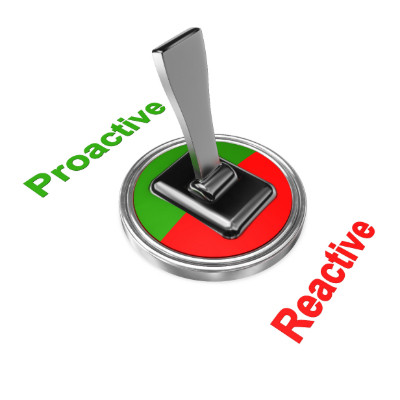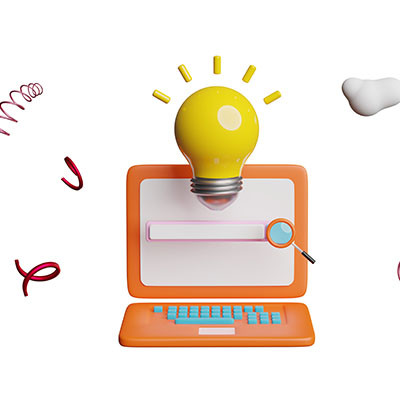Word processors are a part of office life, so it helps to know as much as you can about them. Today, we want to think about ways you can adjust text size, especially after you copy and paste content into a document. Not only will we cover how to do so as plain text, but also how to use keyboard shortcuts to increase or decrease text size and add special formatting without navigating clunky menus.
Washington Works Blog
Remember Tay? Microsoft's 2016 AI chatbot that the internet turned into a wildly offensive, racist mess in just 16 hours? It was a spectacular, public failure that proved one thing: Garbage In, Garbage Out.
Today, the garbage isn't just on Twitter. It's the highly sensitive, proprietary data your own employees are accidentally leaking into the public domain.
The shift to remote work has transformed business, yet the virtual meeting remains a point of friction. A poorly executed remote meeting isn't just a time-waster; it drains productivity and damages company culture.
With the right strategy and tools, your remote meetings can be even more effective and engaging than in-person ones.
Whatever type of business you operate, you likely do so with the intention of assisting your clients, customers, or patrons with a specific goal. It isn’t as though you started a business because you wanted to do all the administrative work… right?
Fortunately, modern technology offers a way out, especially now that artificial intelligence is readily available. Let’s go over three ways that AI could help do the busy work on your behalf, and touch on just how much it could wind up saving you.
I’m sure you have some idea of what you’d want any new hire’s first day to be like. They’re welcomed by the team, and brought to their workstation where everything is ready for them to get to business: all accounts are set up, the laptop works, and there’s a game plan for them to follow.
In reality, however, this first day is likely spent obtaining any available laptop and ensuring your new hire has the secure access they need. Meanwhile, the new team member feels increasingly like an outsider, rather than a contributor, as they jump through these hoops. Less appealing than the alternative, right?
Let’s discuss how crucial it is to get the onboarding experience right.
How many duties and responsibilities fall on you as a business owner? More often than not, you’ll find yourself wearing multiple hats, picking up the slack where you can because you just don’t have the time or the resources to hire staff for certain specialized tasks. Unfortunately, IT maintenance and management is one such role that falls to the wayside all too often—but it doesn’t have to.
Anyone that runs a business with employees knows just how important their sustained efforts are to the success of the endeavor. Unfortunately, not every person always puts in maximum effort or does things the way they’re intended to be done. This can be an issue for the bottom line. Today, we will be looking at the issue of time theft and what you can do about it.
The daily grind is characterized by the feeling that you’re busy all day, but not necessarily “productive.” Your technology could influence this feeling and make the daily grind feel like a slog, but with the right approach to IT, you can focus on technology that empowers rather than overwhelms. How do you make this transition? That’s what we’ll discuss today.
You hear a lot about Artificial Intelligence these days. It can sound a bit like something out of a sci-fi movie, maybe even a little daunting. However, what if I told you AI could be working quietly behind the scenes in many businesses, acting like the most efficient, data-savvy coworker you've ever had?
Today (as of when this was posted) is Friday, so ideally, the feeling in the office would be one of happy anticipation for the weekend… but what if a server crashes, and work gets put on pause, but all the deadlines still stand? This would undoubtedly put a damper on the weekend, and that’s the least of your worries. Who’s going to fix the server?
This kind of situation is precisely why modern businesses can’t afford to wait for things to go wrong, and need to have a resource on their side to proactively address these kinds of issues and catastrophes.
Think about those frustrating workdays when a server goes down, or the daily drag of slow computers and glitchy software. These aren't just minor annoyances; they are significant productivity drains. Research shows employees can lose an average of 10.5 workdays per year due to IT downtime alone. Multiply that across your team, and the financial impact becomes clear. This month, we go through the numbers to see how you can build a more productive business through a well-thought-out technology strategy.
Your desk can either help you get stuff done or totally drain your motivation. If your desk is messy, uncomfortable, or just boring, you might find yourself checking your phone every five minutes or suddenly deciding it’s time to reorganize your sock drawer. With a few simple changes, however, your desk can become your productivity power zone. Let’s break down how to set it up right.
Video calls have become the norm, whether you’re working remotely, catching up with friends, or trying to explain to your grandma how to unmute herself. To be honest, some video meetings feel like an endurance test. Bad lighting, poor audio, and distracting backgrounds can make them unbearable. Do you want to level up your video conferencing game? Here are five tips to help you look and sound like the professional you are.
A lot of businesses feel the pressure to jump on the latest and greatest tech out there. On the surface, that sounds like a smart move, who wouldn’t want cutting-edge tools? Just because something is new and shiny doesn’t mean it’s the right fit for your business, however. So, let’s take a step back and talk about how you can make smart tech decisions that actually give you a return on your investment.
Artificial Intelligence is totally shaking things up—it's one of the coolest, most game-changing technologies we've seen in years. It can do in minutes what used to take people hours or even days, and it's only going to get smarter. That said, if you're a business owner, using AI can sometimes throw a wrench in the works.
Being able to navigate around the Internet browser is a must. Not only is it the front face of most of your Internet-based efforts, there are more security and privacy threats that people need to sidestep today than ever before. This month we thought we’d give you two of the top tips on how to be able to navigate your browser.
Sometimes, one of the most effective ways to be productive is to step back for a moment. Consider how long a chess grandmaster will sit and stare at the board, planning the moves and maneuvers for the next seven turns.
So, to boost your productivity, approach your tasks like a chess grandmaster. Let’s discuss how to go about doing so.
Your business’ productivity software is one of the more important decisions you’ll make, and while there are many options, they won’t all be the best solution. Small business owners have to carefully consider price, scope, and integration, among other factors. Today, we’re looking at six aspects of productivity software your business should think about before committing to a solution.
Businesses face numerous challenges, many of which arise internally. Whether your business is dealing with cybersecurity threats, unhappy customers, or unreliable suppliers, leaders must navigate every threat. Among these, internal issues can often be the most disruptive. In this blog, we'll focus on two critical employee-related challenges that can significantly hinder business operations.



















